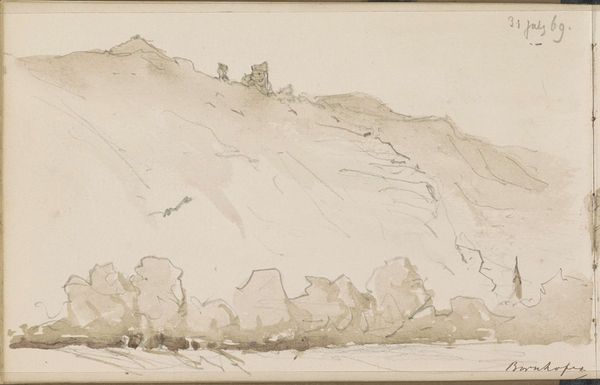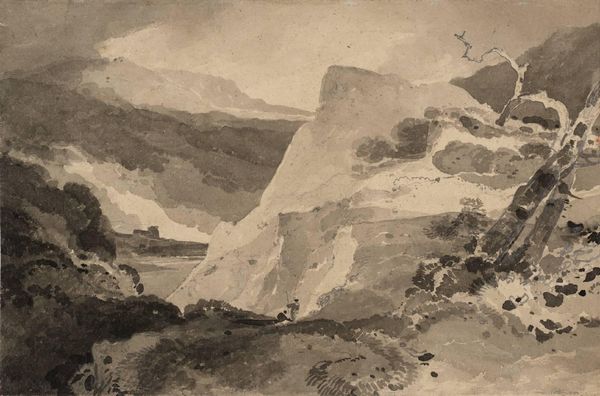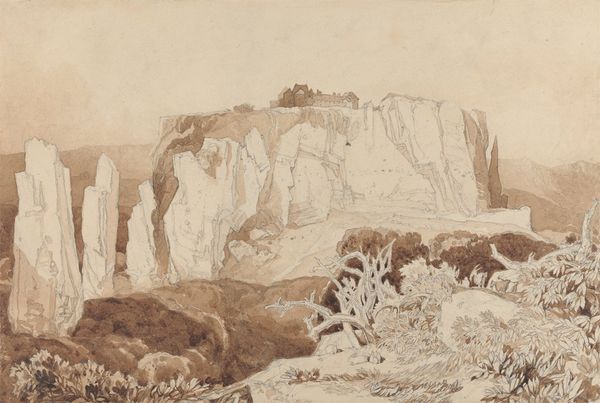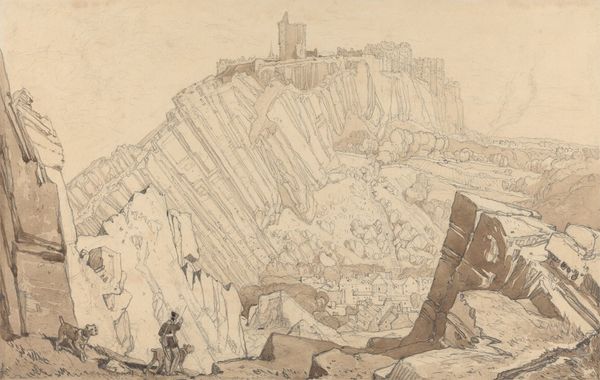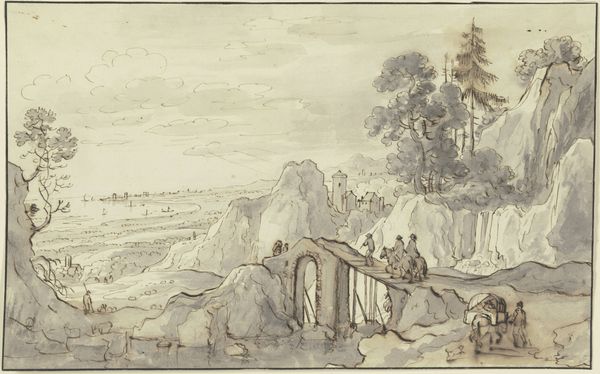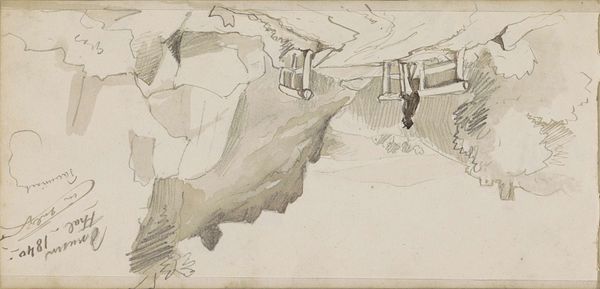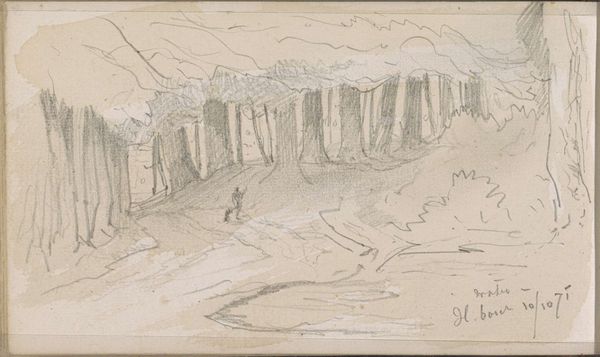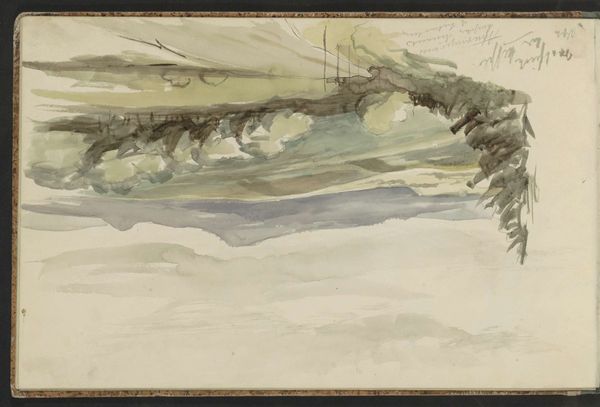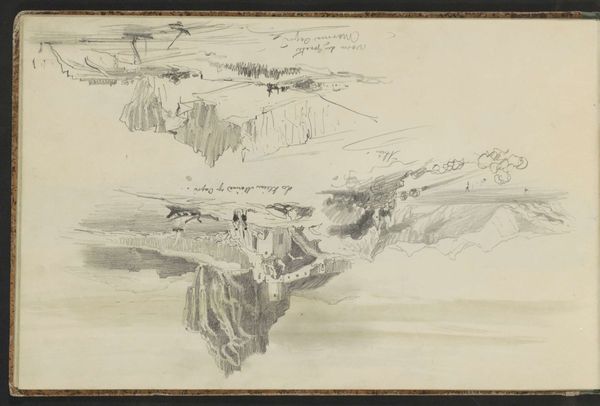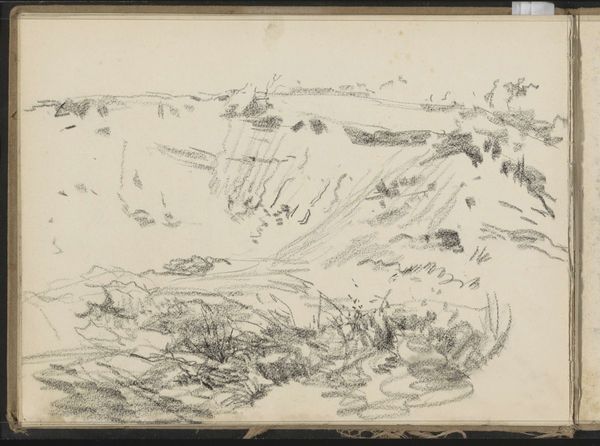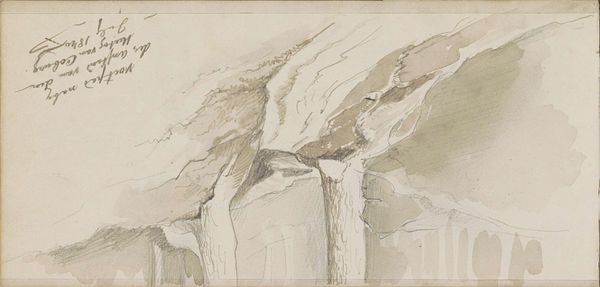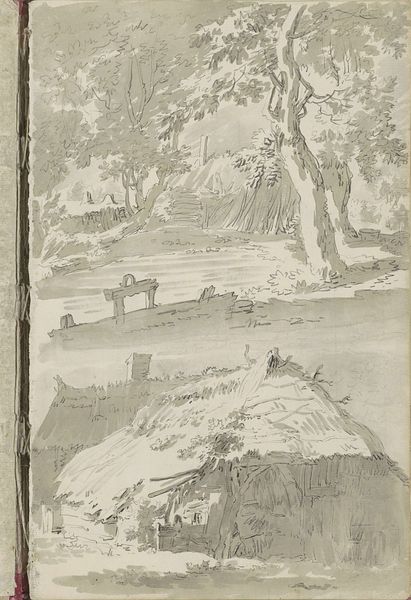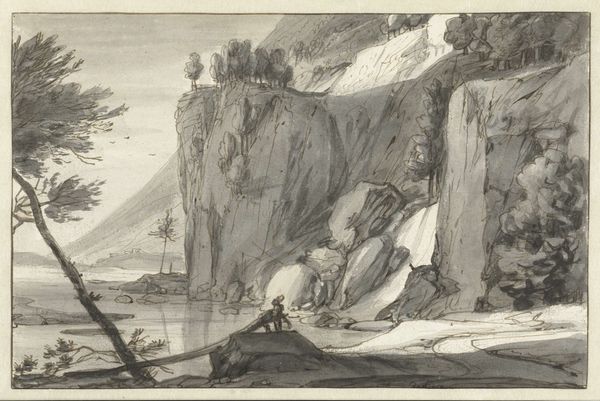
plein-air, watercolor
#
plein-air
#
landscape
#
watercolor
#
romanticism
#
watercolor
Copyright: Rijks Museum: Open Domain
Editor: Here we have Johannes Tavenraat's "Berglandschap met rotsen," a watercolor landscape from 1840. It has this muted palette, almost monochromatic, and a sense of grandeur that's pretty compelling. What do you see in this piece, beyond just the surface level? Curator: Beyond the aesthetic, I see a visual manifestation of Romantic ideals intertwined with the social and political realities of its time. Consider the concept of the sublime: the immense, awe-inspiring, almost terrifying power of nature. In this context, what is the relationship between the solitary figure on horseback and the landscape? Is it one of harmonious integration, or of subjugation? Editor: That’s interesting! I hadn't really considered the figure in relation to the mountain that way. It seems almost dwarfed by it. Curator: Exactly. Now, thinking intersectionally, how might access to, and depictions of, such landscapes have been mediated by factors like class and gender in 19th-century Netherlands? Whose stories are amplified by romanticized images like this, and whose are obscured? Are there alternative perspectives of this landscape we should consider? Editor: So, by focusing on those power dynamics, it encourages us to examine who had the ability to experience and represent nature at the time, right? It wasn't a universal experience. Curator: Precisely. It's about challenging the perceived neutrality of art and recognizing it as a product of its socio-historical environment. Editor: That gives me a lot to think about, thank you. It’s important to recognize the power structures inherent in landscape paintings. Curator: Absolutely. The interchange between art history and social consciousness gives a new depth.
Comments
No comments
Be the first to comment and join the conversation on the ultimate creative platform.
